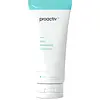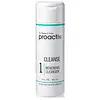What's inside
What's inside
 Key Ingredients
Key Ingredients

 Benefits
Benefits

 Concerns
Concerns

 Ingredients Side-by-side
Ingredients Side-by-side

Water
Skin ConditioningGlycerin
HumectantSalicylic Acid
MaskingCetearyl Alcohol
EmollientNeopentyl Glycol Diheptanoate
EmollientXanthan Gum
EmulsifyingParaffin
PerfumingGlyceryl Stearate
EmollientPEG-100 Stearate
Saxifraga Sarmentosa Extract
Skin ConditioningVitis Vinifera Fruit Extract
Skin ConditioningMorus Alba Bark Extract
Skin ConditioningScutellaria Baicalensis Root Extract
AstringentButylene Glycol
HumectantLinoleic Acid
CleansingLinolenic Acid
CleansingSodium Hyaluronate
HumectantDisodium EDTA
Glycolic Acid
BufferingPolysorbate 20
EmulsifyingSodium Hydroxide
BufferingCetyl Alcohol
EmollientIsododecane
EmollientPhenoxyethanol
PreservativeChlorphenesin
AntimicrobialBenzoic Acid
MaskingSorbic Acid
PreservativeParfum
MaskingWater, Glycerin, Salicylic Acid, Cetearyl Alcohol, Neopentyl Glycol Diheptanoate, Xanthan Gum, Paraffin, Glyceryl Stearate, PEG-100 Stearate, Saxifraga Sarmentosa Extract, Vitis Vinifera Fruit Extract, Morus Alba Bark Extract, Scutellaria Baicalensis Root Extract, Butylene Glycol, Linoleic Acid, Linolenic Acid, Sodium Hyaluronate, Disodium EDTA, Glycolic Acid, Polysorbate 20, Sodium Hydroxide, Cetyl Alcohol, Isododecane, Phenoxyethanol, Chlorphenesin, Benzoic Acid, Sorbic Acid, Parfum
Benzoyl Peroxide 2.5%
Water
Skin ConditioningMagnesium Aluminum Silicate
AbsorbentGlyceryl Stearate
EmollientPEG-100 Stearate
Sorbitol
HumectantDimethyl Isosorbide
SolventDisodium PEG-12 Dimethicone Sulfosuccinate
CleansingTridecyl Stearate
EmollientNeopentyl Glycol Dicaprylate/Dicaprate
EmollientParaffin
PerfumingCetyl Esters
EmollientAnthemis Nobilis Flower Extract
MaskingTridecyl Trimellitate
EmollientTrisodium Sulfosuccinate
BufferingPEG-12 Dimethicone
Skin ConditioningSodium Sulfate
Sodium Hyaluronate
HumectantPropylene Glycol
HumectantSodium PCA
HumectantXanthan Gum
EmulsifyingPhenoxyethanol
PreservativeImidazolidinyl Urea
PreservativeMethylparaben
PreservativePropylparaben
PreservativeParfum
MaskingBenzoyl Peroxide 2.5%, Water, Magnesium Aluminum Silicate, Glyceryl Stearate, PEG-100 Stearate, Sorbitol, Dimethyl Isosorbide, Disodium PEG-12 Dimethicone Sulfosuccinate, Tridecyl Stearate, Neopentyl Glycol Dicaprylate/Dicaprate, Paraffin, Cetyl Esters, Anthemis Nobilis Flower Extract, Tridecyl Trimellitate, Trisodium Sulfosuccinate, PEG-12 Dimethicone, Sodium Sulfate, Sodium Hyaluronate, Propylene Glycol, Sodium PCA, Xanthan Gum, Phenoxyethanol, Imidazolidinyl Urea, Methylparaben, Propylparaben, Parfum
 Reviews
Reviews

Ingredients Explained
These ingredients are found in both products.
Ingredients higher up in an ingredient list are typically present in a larger amount.
Glyceryl Stearate is a mix of glycerin and stearic acid.
It is used to stabilize the mixing of water and oil ingredients. By preventing these ingredients from separating, it can help elongate shelf life. It can also help thicken the product's texture.
As an emollient, it helps soften skin and supports barrier-replenishing ingredients.
In cosmetics, Glyceryl Stearate is often made from vegetable oils or synthetically produced.
This ingredient may not be fungal-acne safe
Fun fact: The human body also creates Glyceryl Stearate naturally.
Learn more about Glyceryl StearateParaffin is a solid created from petroleum. The term 'paraffin' can also refer to either
petroleum jelly or mineral oil.
It has natural occlusive properties which can worsen oily skin. Due to its petrolatum base, this ingredient is not fungal-acne safe.
Parfum is a catch-all term for an ingredient or more that is used to give a scent to products.
Also called "fragrance", this ingredient can be a blend of hundreds of chemicals or plant oils. This means every product with "fragrance" or "parfum" in the ingredients list is a different mixture.
For instance, Habanolide is a proprietary trade name for a specific aroma chemical. When used as a fragrance ingredient in cosmetics, most aroma chemicals fall under the broad labeling category of “FRAGRANCE” or “PARFUM” according to EU and US regulations.
The term 'parfum' or 'fragrance' is not regulated in many countries. In many cases, it is up to the brand to define this term.
For instance, many brands choose to label themselves as "fragrance-free" because they are not using synthetic fragrances. However, their products may still contain ingredients such as essential oils that are considered a fragrance by INCI standards.
One example is Calendula flower extract. Calendula is an essential oil that still imparts a scent or 'fragrance'.
Depending on the blend, the ingredients in the mixture can cause allergies and sensitivities on the skin. Some ingredients that are known EU allergens include linalool and citronellol.
Parfum can also be used to mask or cover an unpleasant scent.
The bottom line is: not all fragrances/parfum/ingredients are created equally. If you are worried about fragrances, we recommend taking a closer look at an ingredient. And of course, we always recommend speaking with a professional.
Learn more about ParfumPeg-100 Stearate is an emollient and emulsifier. As an emollient, it helps keep skin soft by trapping moisture in. On the other hand, emulsifiers help prevent oil and water from separating in a product.
PEGS are a hydrophilic polyether compound . There are 100 ethylene oxide monomers in Peg-100 Stearate. Peg-100 Stearate is polyethylene glycol ester of stearic acid.
Phenoxyethanol is a preservative that has germicide, antimicrobial, and aromatic properties. Studies show that phenoxyethanol can prevent microbial growth. By itself, it has a scent that is similar to that of a rose.
It's often used in formulations along with Caprylyl Glycol to preserve the shelf life of products.
Sodium Hyaluronate is hyaluronic acid's salt form. It is commonly derived from the sodium salt of hyaluronic acid.
Like hyaluronic acid, it is great at holding water and acts as a humectant. This makes it a great skin hydrating ingredient.
Sodium Hyaluronate is naturally occurring in our bodies and is mostly found in eye fluid and joints.
These are some other common types of Hyaluronic Acid:
Learn more about Sodium HyaluronateWater. It's the most common cosmetic ingredient of all. You'll usually see it at the top of ingredient lists, meaning that it makes up the largest part of the product.
So why is it so popular? Water most often acts as a solvent - this means that it helps dissolve other ingredients into the formulation.
You'll also recognize water as that liquid we all need to stay alive. If you see this, drink a glass of water. Stay hydrated!
Learn more about WaterXanthan gum is used as a stabilizer and thickener within cosmetic products. It helps give products a sticky, thick feeling - preventing them from being too runny.
On the technical side of things, xanthan gum is a polysaccharide - a combination consisting of multiple sugar molecules bonded together.
Xanthan gum is a pretty common and great ingredient. It is a natural, non-toxic, non-irritating ingredient that is also commonly used in food products.
Learn more about Xanthan Gum